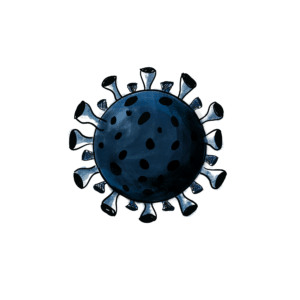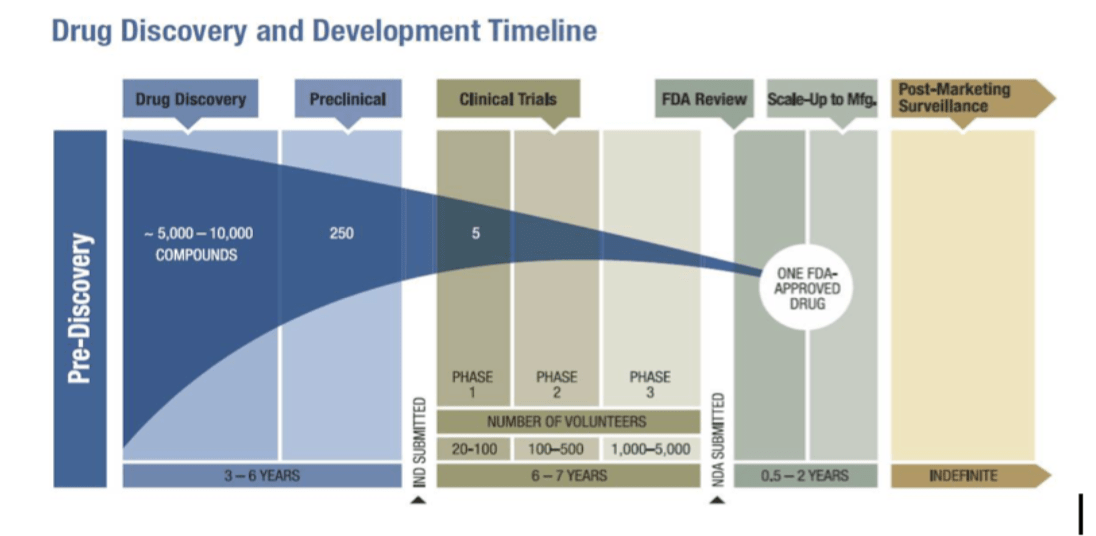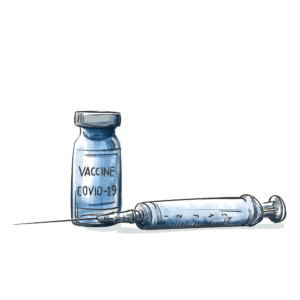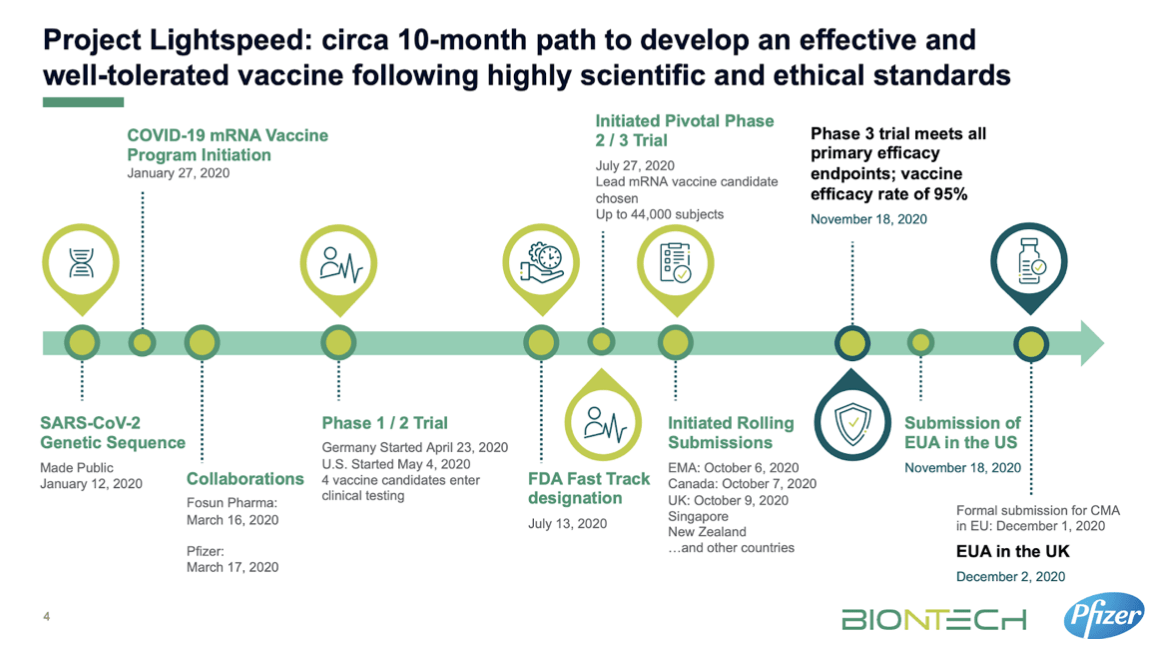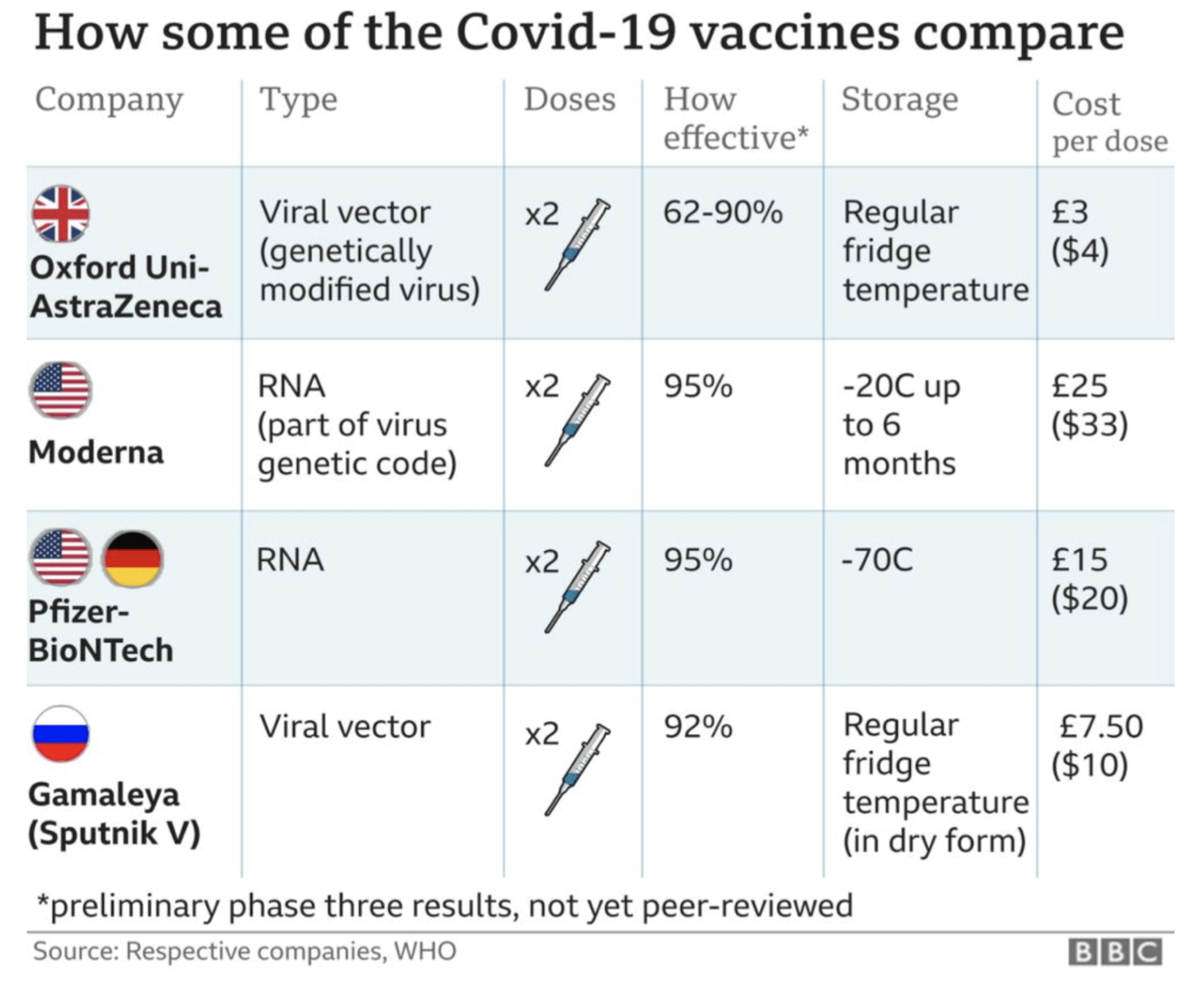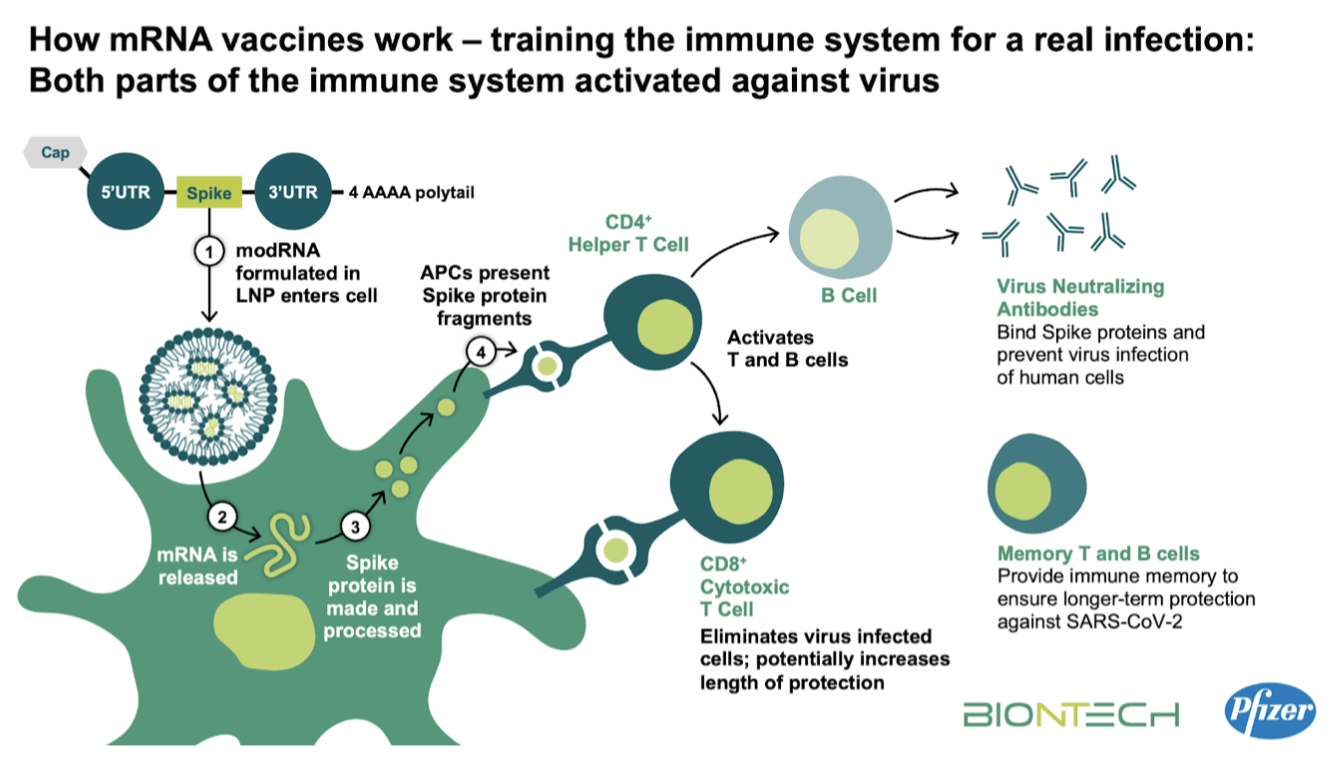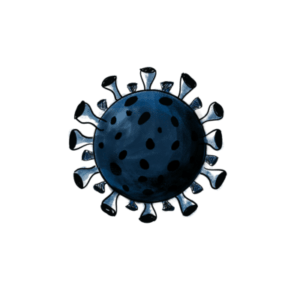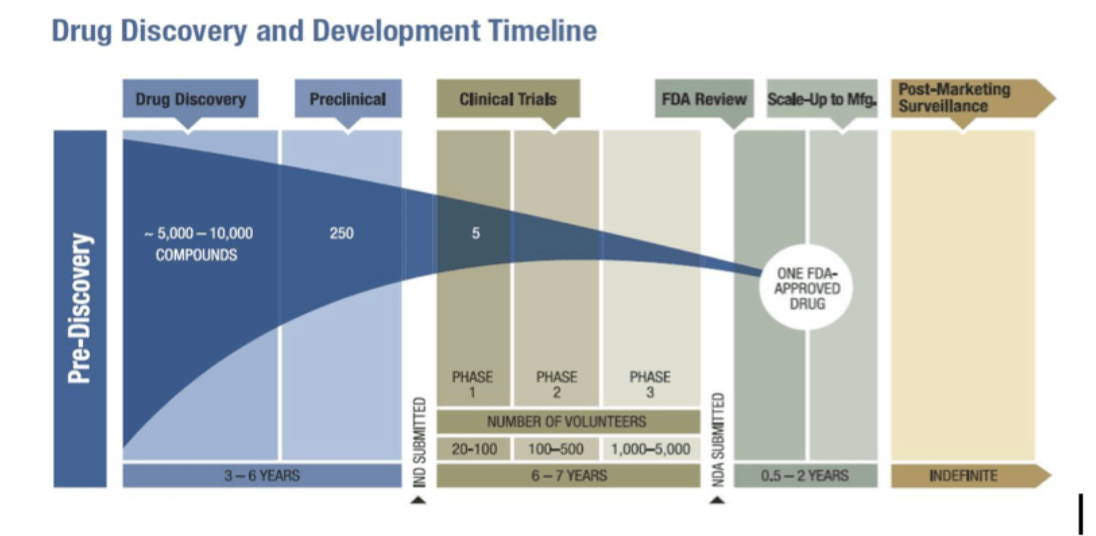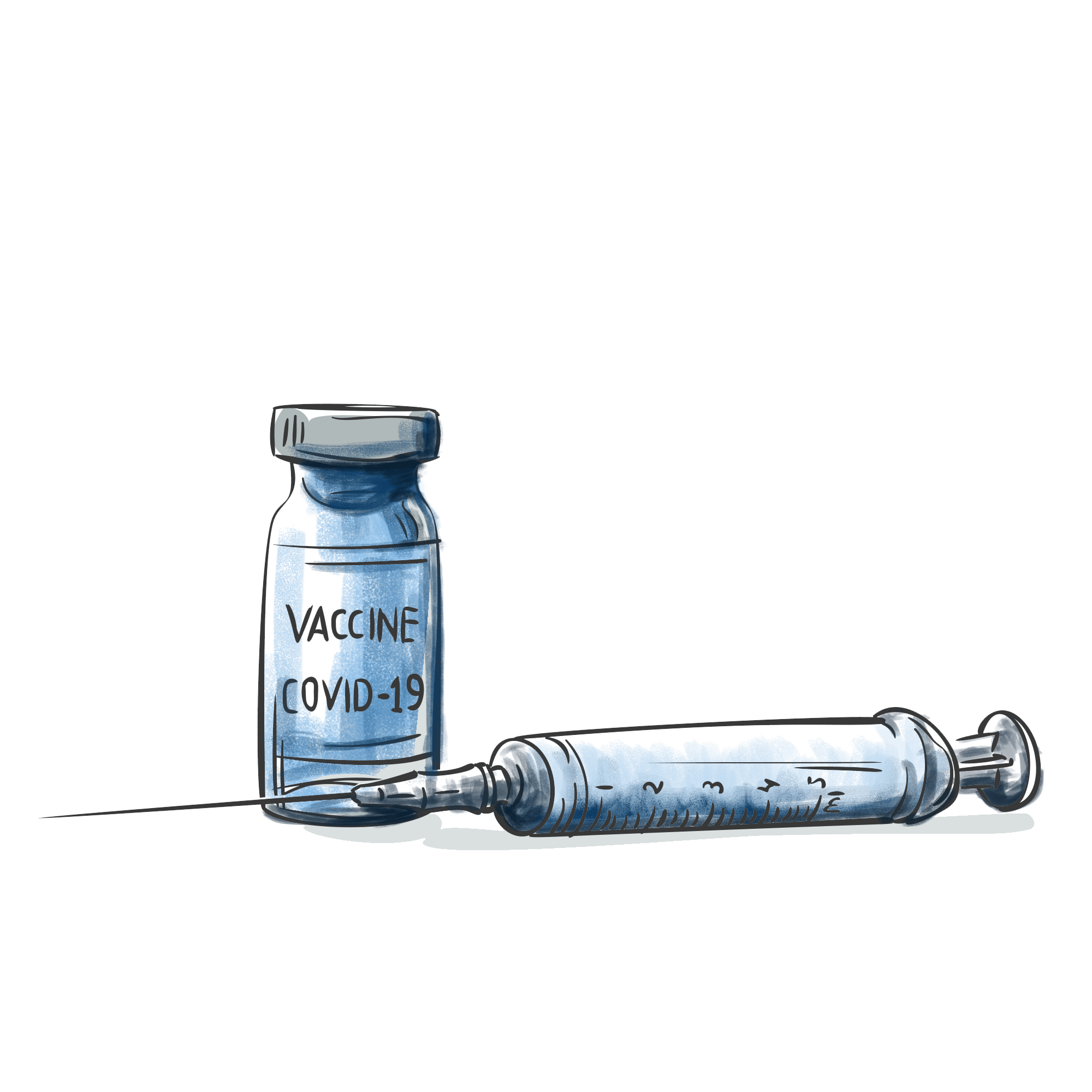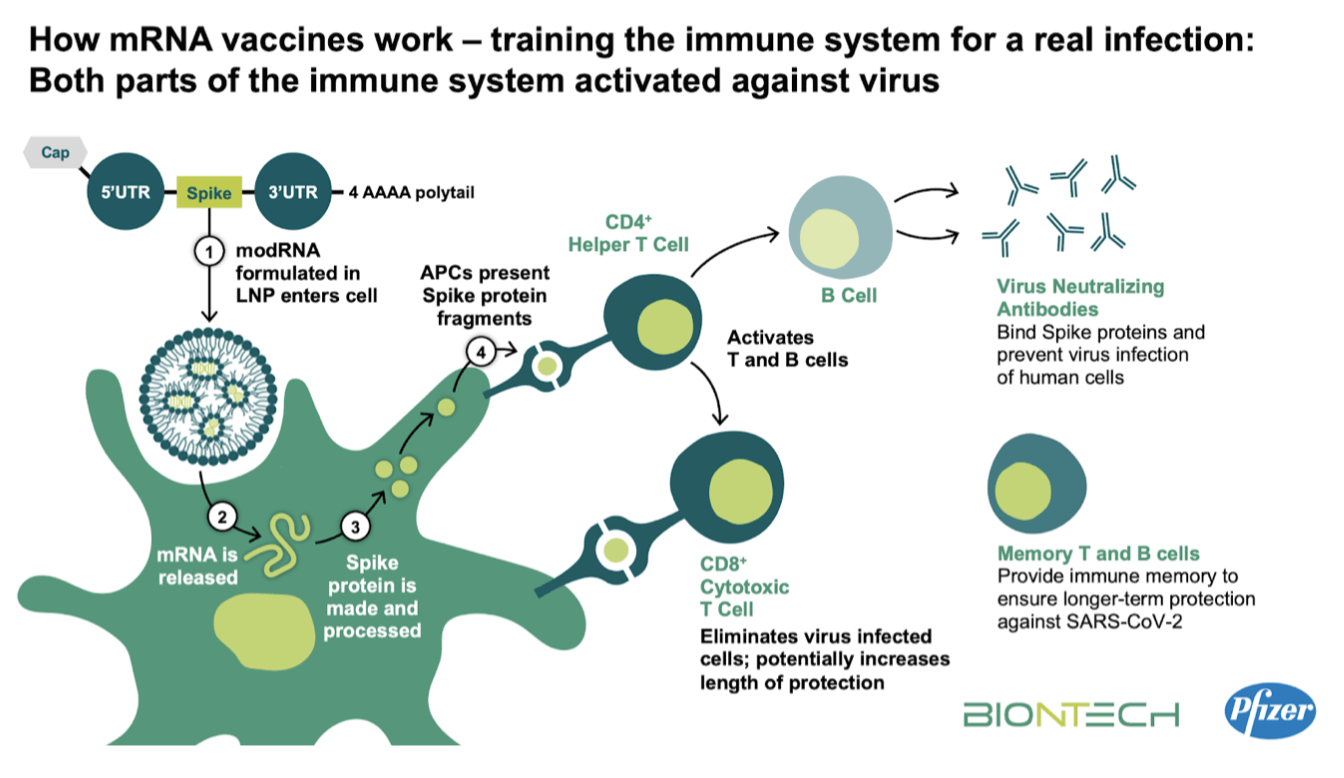Do the vaccines actually work?
Short answer: Yes they do and the results are available in the detailed Phase III trial data produced by the three companies in the last two months.
Long answer: Moderna & Pfizer/BioNtech vaccines have similar efficacy whilst AstraZeneca has less efficacy but pricing & storage/effective delivery becomes an important factor in deciding which vaccine is best for which country.
Click here for our previous blog on Busting the Vaccine Myths
Pfizer/BioNTech
A two dose vaccine with the second dose to be administered 28 days after the first dose. Study data showed a 95% efficacy rate 7 days after the second dose with efficacy in adults over age of 65 at an excellent 94%. The final analysis was to be done at 164 case mark but instead they were able to surpass and hit the 170 case mark (due to the prevalence of COVID19). 170 people enrolled in the trial contracted COVID19 – when called back, it turns out 162 were from the placebo arm compared to 8 in the vaccine arm.
Approved by the FDA and the EU for emergency use, Pfizer/BioNtech vaccine has been deployed since early December in countries across the world. Due to the sensitivity of the mRNA vaccine compound, the vaccine requires storage at -70C to prevent denaturing of the key compound and rendering the vaccine vials useless. As such, cold storage supply chains are being developed around the world to safeguard against denaturation in transit. Given the freezing temperatures required, the costs associated with deep freeze supply chain equipment and the precision with which the vaccine must be administered post vial opening, this particular vaccine deployment may be difficult to execute in south asian countries such as Sri Lanka.
Moderna
Another two dose vaccine with the second dose administered 28 days after the first. Data showed a 94.1% efficacy rate 7 days after the second dose. Final analysis happened at the 196 case mark with 185 cases in the placebo group and 11 in the vaccine group. Interestingly, the analysis included 30 severe cases of COVID19 – all of which were in the placebo group and none in the vaccine group heralding this vaccine as better at preventing severe outcomes of the disease.
The vaccine can be stored at -20C (normal refrigeration temperatures) for up to six months making them more friendlier to tropical countries and eliminating the heavy investment into logistics that may be required of Pfizer/BioNtech. Given the novel nature of the mRNA vaccines, those who administer the vaccine need to work in a timely and efficient manner to avoid wastage and may require upskilling of existing healthcare staff to ensure the same.
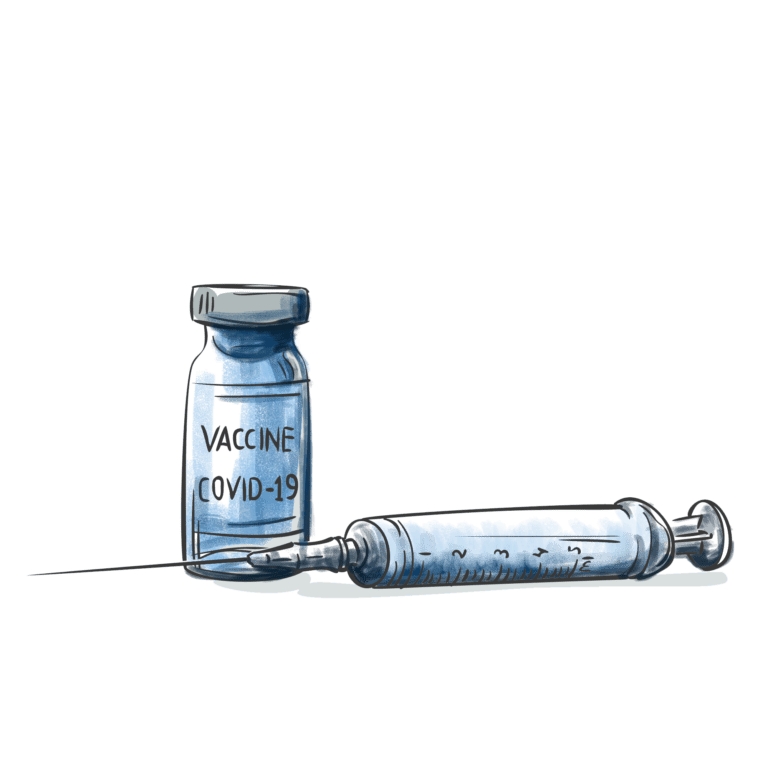
AstraZeneca
Earlier created to be a two dose vaccine, a mistake during one part of the trial resulted in a surprising finding that administering half a dose first and then a full dose second resulted in 90% efficacy vs. 62% efficacy in those getting the two full doses. However, only 2,700 persons were administered the “mistaken” dosage and this requires further study. This leaves AstraZeneca as the vaccine candidate with the least efficacy when compared to the two mRNA vaccine options. Results were based on a 131 case mark with 30 in the control group and 11 in the vaccine group contracting the virus.
AstraZeneca remains the cheapest vaccine at GBP 3/dose and can be stored at room temperature (like most other existing vaccines) allowing health workers to work in a familiar setting.
If you are questioning which vaccine should you take: given what is known of COVID19 (its rapid spread, its attack on the respiratory and vascular systems of the body, long COVID afflicting patients six months post initial recovery and the fatality rate), all of these vaccines appear as attractive alternate options.
ඇත්තටම එන්නත් සාර්ථකද?
කෙටි පිළිතුර: ‘ඔවු’. පහුගිය මාස 4 ක කාලයේදී, ප්රධාන සමාගම් 3 ප්රකාශයට පත්කරපු, 3 වන අදියරේ අධ්යයන වල දත්ත වලින් ඒ බව පැහැදිලි වෙනවා.
දීර්ඝ පිළිතුර: Moderna සහ Pfizer/BioNtech එන්නත් වල සාර්ථකත්වය ගොඩක් දුරට සමානයි. AstraZeneca එන්නතේ සාර්ථකත්වය ඊට සාපේක්ෂව අඩු වුණත් රටකට වඩාත් ගැළපෙන එන්නත තීරණය කිරීමේදී මිල, ගබඩා කිරීමේ හැකියාව සහ එන්නත ලබාගැනීමේ හැකියාව වගේ සාධක සැලකිල්ලට ගත යුතු වෙනවා.
Pfizer/BioNtech
මෙය මාත්රා දෙකකින් ලබාදෙන එන්නතක්. පළමු මාත්රාව ලබා දී දින 28 කට පසු දෙවැනි මාත්රාව ලබාදිය යුතුයි. දෙවැනි මාත්රාව ලබා දී දින 7 ක් ඇතුළත මෙය 95% ක සාර්ථකත්වයක් පෙන්නුම් කරන බව අධ්යයන මගින් පෙනී ගොස් තිබෙනවා. වයස අවුරුදු 65 ට වැඩි වැඩිහිටියන් අතරත් එය 94% ක් තරම් විශිෂ්ට සාර්ථකත්වයක් පෙන්නුම් කර තිබීම විශේෂයෙන් සඳහන් කළ යුතුයි. එන්නත සම්බන්ධ පරීක්ෂණ වලදී ආසාදිතයන් 164 මට්ටමේදී අවසන් විශ්ලේෂණය සිදුකිරීමට නියමිතව තිබුණත් එම සීමාව ඉක්මවා ආසාදිතයන් සංඛ්යාව 170 ට ළඟා වුණා (COVID-19 රෝගය පුළුල් ලෙස ව්යාප්ත වී තිබීම නිසා). එනම් මෙම අධ්යයනයට සහභාගී වූවන් අතරින් 170 දෙනෙකුට COVID-19 රෝගය රෝගය ආසාදනය වී තිබුණා. ඔවුන් පිළිබඳව කරන ලද පසු-අධ්යයනයේදී අනාවරණය වුණේ අධ්යයනය සඳහා එන්නත වෙනුවට වෙනත් යමක් (Placebo) ලබාදුන් පාලක කණ්ඩායමේ 162 දෙනෙකුට රෝගය ආසාදනය වී තිබුණු අතර, සත්ය එන්නත ලබාදුන් කණ්ඩායමෙන් රෝගය ආසාදනය වී තිබුණේ 8 දෙනෙකුට පමණක් බවයි.
ඇමරිකාවේ ආහාර හා ඖෂධ පාලන අධිකාරිය මගින් සහ යුරෝපා සංගමය මගින් හදිසි භාවිතය සඳහා අනුමත කර ඇති Pfizer/BioNtech එන්නත ලොව පුරා රටවල් රැසක පසුගිය දෙසැම්බර් මාසයේ සිටම භාවිතා වෙනවා. mRNA එන්නත් සංයෝගයේ සංවේදීත්වය නිසා එන්නතේ කාර්යක්ෂමතාව විනාශ නොවී පවත්වා ගැනීමට නම් එය සෙල්සියස් අංශක -70 මට්ටමේ පවත්වාගත යුතුයි. මේ නිසා, එන්නත් තොග ප්රවාහනය කිරීමේදී ඒවාට හානි නොවී පවත්වා ගැනීම සඳහා මේ වනවිට ලොව පුරා අධිශීත සැපයුම් දාමයන් නිර්මාණය කෙරෙමින් පවතිනවා. මේ ආකාරයට අධිශීත සැපයුම් හා ගබඩා පහසුකම් ස්ථාපිත කිරීමට යන වියදම සහ, විවෘත කළ පසු එන්නත් වල ගුණාත්මක භාවයට හානි නොවීම සඳහා අනුගමනය කළ යුතු ක්රියාමාර්ග ආදිය දෙස බලන විට, ශ්රී ලංකාව වැනි දකුණු ආසියාතික රටවල මෙම එන්නත භාවිතා කිරීමට දුෂ්කර වන්නට පුළුවන්.
Moderna
මෙයත් මාත්රා දෙකකින් ලබාදිය යුතු එන්නතක් වන අතර, පළමු මාත්රාවෙන් දින 28 කට පසු දෙවැනි මාත්රාව ලබාදිය යුතුයි. දෙවැනි මාත්රාව ලබාදීමෙන් දින 7 කට පසු මෙහි සාර්ථකත්වය 94.1% මට්ටමේ පවතින බව අධ්යයන මගින් පෙනීගොස් තිබෙනවා. ආසාදිතයන් 196 මට්ටමේදී අධ්යයනයේ අවසන් විශ්ලේෂණය සිදුකෙරුණු අතර එන්නත වෙනුවට වෙනත් යමක් (Placebo) ලබාදුන් පාලක කණ්ඩායමෙන් ආසාදිතයන් 185 ක් සහ සත්ය එන්නත ලබාදුන් කණ්ඩායමෙන් ආසාදිතයන් 11 ක් වාර්තා වුණා. මෙහි විශේෂත්වය වන්නේ මෙම අධ්යයනයේදී බරපතළ COVID-19 රෝගීන් 30 දෙනෙකුද වාර්තා වීමයි. ඔවුන් සියලු දෙනාම වාර්තා වී තිබුණේ Placebo කණ්ඩායමෙන්. ඒ අනුව මෙම එන්නත COVID-19 රෝගය නිසා බරපතළ ලෙස රෝගාතුර වීමේ අවදානම අඩු කිරීම සම්බන්ධයෙන් වඩාත් සාර්ථක බව පෙනී ගියා.
මෙම එන්නත සෙල්සියස් අංශක -20, එනම් සාමාන්ය ශීතකරණ උෂ්ණත්ව මට්ටමේ මාස 6 ක් දක්වා ගබඩා කර තබන්නට පුළුවන්. මේ හේතුවෙන් Pfizer/BioNtech එන්නතේදී මෙන් කාර්ය සම්පාදන කටයුතු වලට විශාල ආයෝජනයන් සිදුකළ යුතු නැති නිසා එය නිවර්තන රටවල භාවිතයට වඩාත් සුදුසුයි. mRNA එන්නත් තවමත් අපට අලුත් දෙයක් නිසා, ඒවා අපතේ යාමේ අවදානම වළක්වා ගැනීම සඳහා එන්නත් කිරීමේ ක්රියාවලියේදී නොපමාව හා කාර්යක්ෂමව කටයුතු කළ යුතු වෙනවා. එම නිසා මෙම එන්නත ලබාදීම සඳහා සෞඛ්ය සේවකයන්ට විශේෂ පුහුණුවක් ලබාදීමට සිදුවන්නට පුළුවන්.
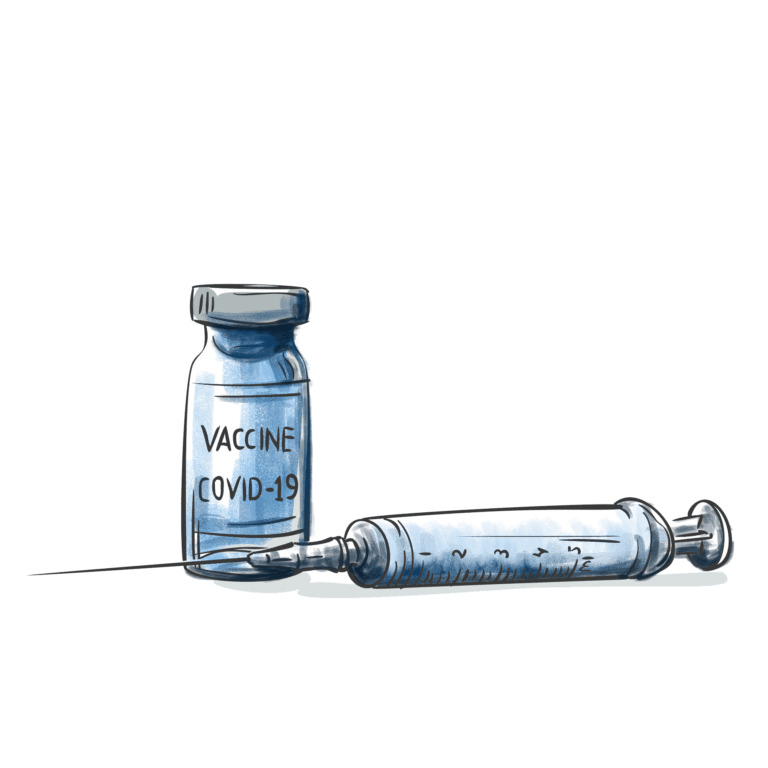
AstraZeneca
මෙම එන්නත මුලින් සැලසුම් කර තිබුණේ සමාන මාත්රා දෙකකින් ලබාදෙන්නටයි. එහෙත් අධ්යයන අතරතුරදී සිදුවූ අත්වැරදීමක් නිසා, මුලින් මාත්රා භාගයක් ලබාදී දෙවනුව සම්පූර්ණ මාත්රාව ලබාදීම මගින්, මුලින් පෙන්නුම් කළ 63% සාර්ථකත්වයට සාපේක්ෂව 90% ක සාර්ථකත්වයක් අත්පත් කරගත හැකි බව පෙනී ගියා. කෙසේ වුවත් මේ විශේෂ මාත්රා ක්රමය තවමත් ලබා දී ඇත්තේ 2,700 දෙනෙකුට පමණක් නිසා මේ සම්බන්ධයෙන් වැඩිදුර පරීක්ෂණ සිදුකළ යුතුයි. ඒ අනුව දැනට ඇති mRNA එන්නත් වර්ග දෙකට සාපේක්ෂව මෙම එන්නත තවමත් අඩු සාර්ථකත්වයක් ඇති එන්නතක් ලෙස සැලකෙනවා. ප්රතිඵල පදනම් වී ඇත්තේ ආසාදිතයන් 131 මට්ටම අනුවයි. ආසාදිතයන් 30 ක් පාලිත කණ්ඩායමෙන් සහ ආසාදිතයන් 11 ක් එන්නත් කණ්ඩායමෙන් වාර්තා වී තිබුණා.
බ්රිතාන්ය පවුම් 3 කට ලබාදෙන AstraZeneca එන්නත දැනට ඇති එන්නත් අතර මිලෙන් අඩුම එන්නතයි. එය අනෙකුත් බොහෝ එන්නත් වර්ග මෙන්ම කාමර උෂ්ණත්වයේ ගබඩා කළ හැකි නිසා සෞඛ්ය සේවකයන්ට වඩාත් පහසුවෙන් එය භාවිතා කරන්නට පුළුවන්.
සමහර විට, මේ එන්නත් අතරින් ඔබ ලබාගත යුත්තේ කුමන එන්නතද කියා ඔබ කල්පනා කරනවා ඇති. කෙසේ වුවත්, දැනට අපි COVID-19 රෝගය සම්බන්ධයෙන් දන්නා කරුණු අනුව (එය පැතිරෙන වේගය, ශරීරයේ ශ්වසන පද්ධතියට හා හර්ද නාල පද්ධතියට එය ඇතිකරන බලපෑම, රෝගය සුවවූ පසුවත් මාස 6 ක පමණක් කාලයක් ඇතැම් රෝගීන් තුළ රෝග ලක්ෂණ පැවතීම සහ මරණ අනුපාතය ආදිය) කුමන එන්නත වුණත් ඒ සෑම එන්නතම ‘හොඳ එන්නතක්’ බවට සැකයක් නැහැ.
- https://www.profil.com/knowledge-center/trial-stages
- https://www.ncbi.nlm.nih.gov/pmc/articles/PMC6226120/
- https://investors.biontech.de/static-files/53f0968a-279b-4f82-a2fc-d67dcb6e4e91
- https://www.modernatx.com/modernas-work-potential-vaccine-against-covid-19
- https://www.health.harvard.edu/blog/why-are-mrna-vaccines-so-exciting-2020121021599
- https://www.pfizer.com/news/press-release/press-release-detail/pfizer-and-biontech-conclude-phase-3-study-covid-19-vaccine
- https://www.livemint.com/science/health/oxford-astrazeneca-publish-final-stage-results-covid-vaccine-70-effective-shows-lancet-data-11607444483396.html
Similar Articles...

Let’s talk flu, its prevention and home remedies.
Boo-ger season is here! Let’s begin by defining flu (short term for influenza) because it’s usually misunderstood as fever or cold. Flu is a common

What’s The Deal With COVID19 Boosters?
As Sri Lanka rolls out its COVID19 booster program, we break down the answers to your most pressing questions. Firstly, what is a booster? A
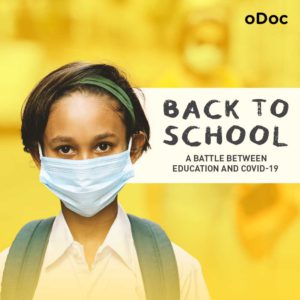
Back to School – A Battle Between Education and COVID-19
Back to School – A Battle Between Education and COVID-19 Students are finally returning to school. But as parents, many are worried about COVID-19 safety.

